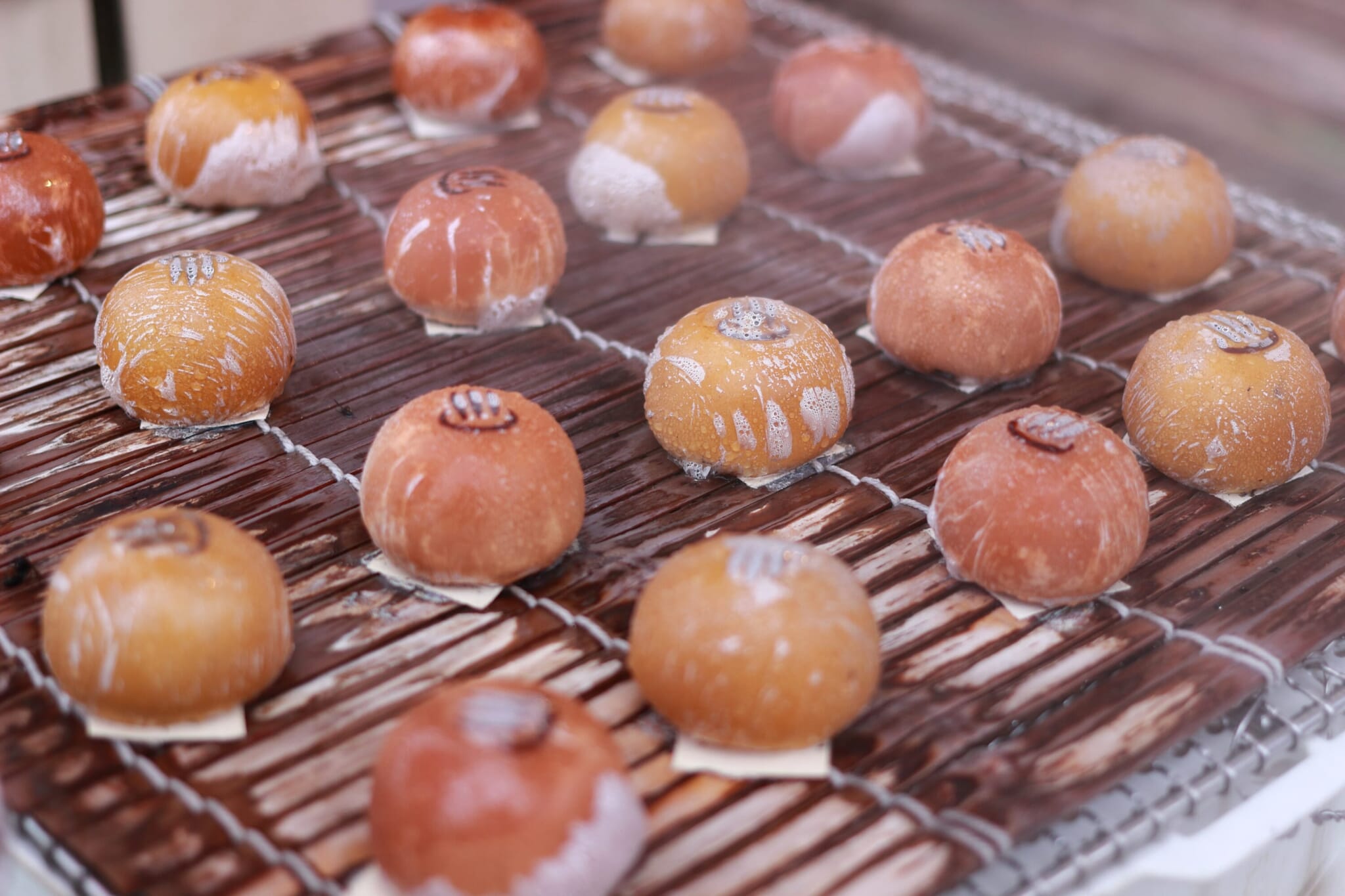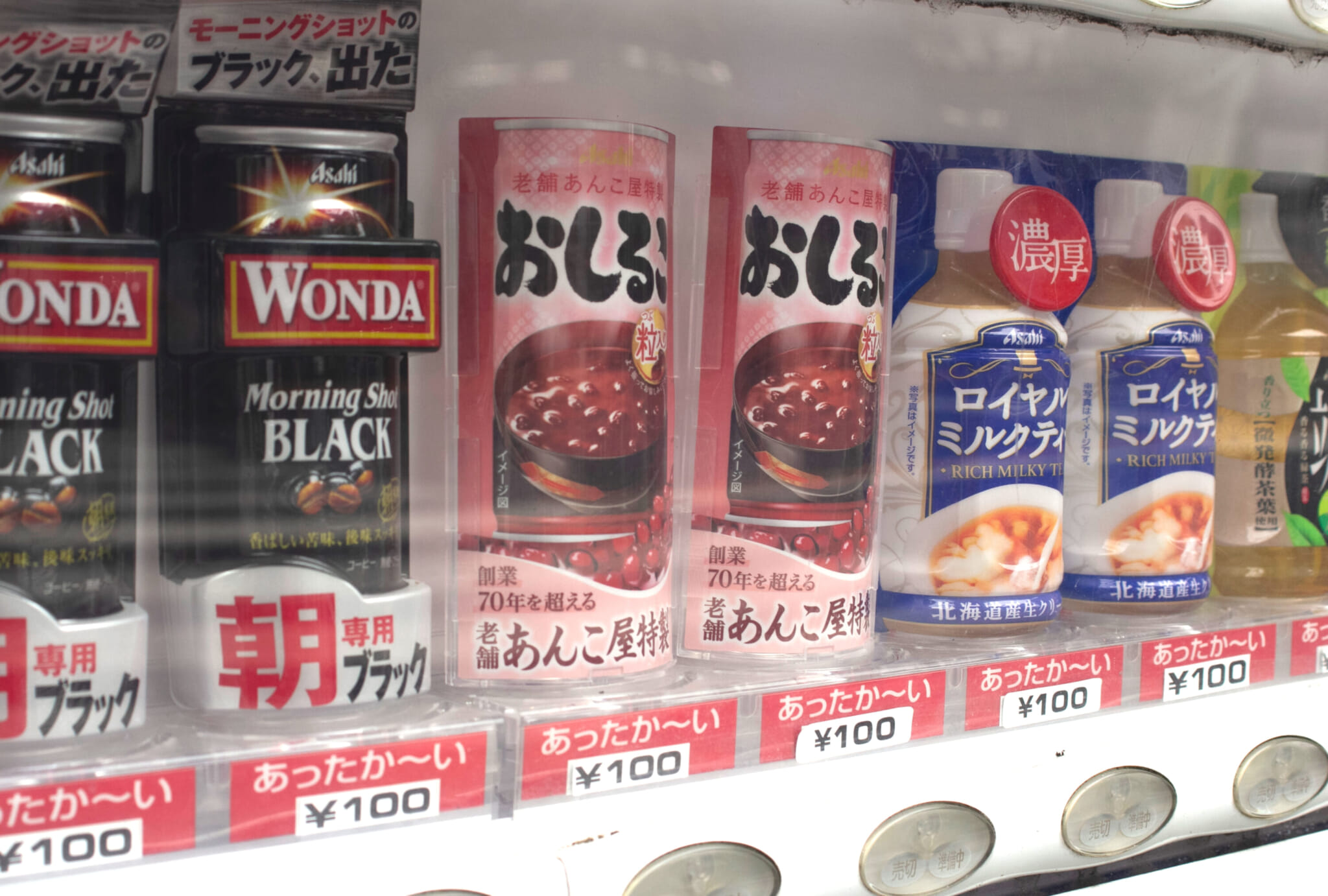
Oshiruko
You’re in a traditional Japanese kissa. You ask, somewhat optimistically, perhaps, if they have anything without eggs or dairy in it. A look of confusion comes across the server’s face: what, no eggs? Dairy? All the bread, of course, has dairy in it. Dreams of pizza toast, sans cheese, dashed. But wait. The seasonal item has just been switched to zenzai. What? It sounds like a made-up word, but it isn’t. Zenzai is oshiruko — a syrupy, sugary soup , made from adzuki beans — with small mochi dancing on the top.
Hot, gloopy and exactly what you need on a winter’s day, oshiruko, or its zenzai version, is a sweet soup sold at cafés and in many vending machines. You can also make it at home, ideally using half a packet, as this soup, if we haven’t mentioned before, is as sweet as a snack with one-third the sugar content could be.
Available at: cafés, vending machines, supermarkets.
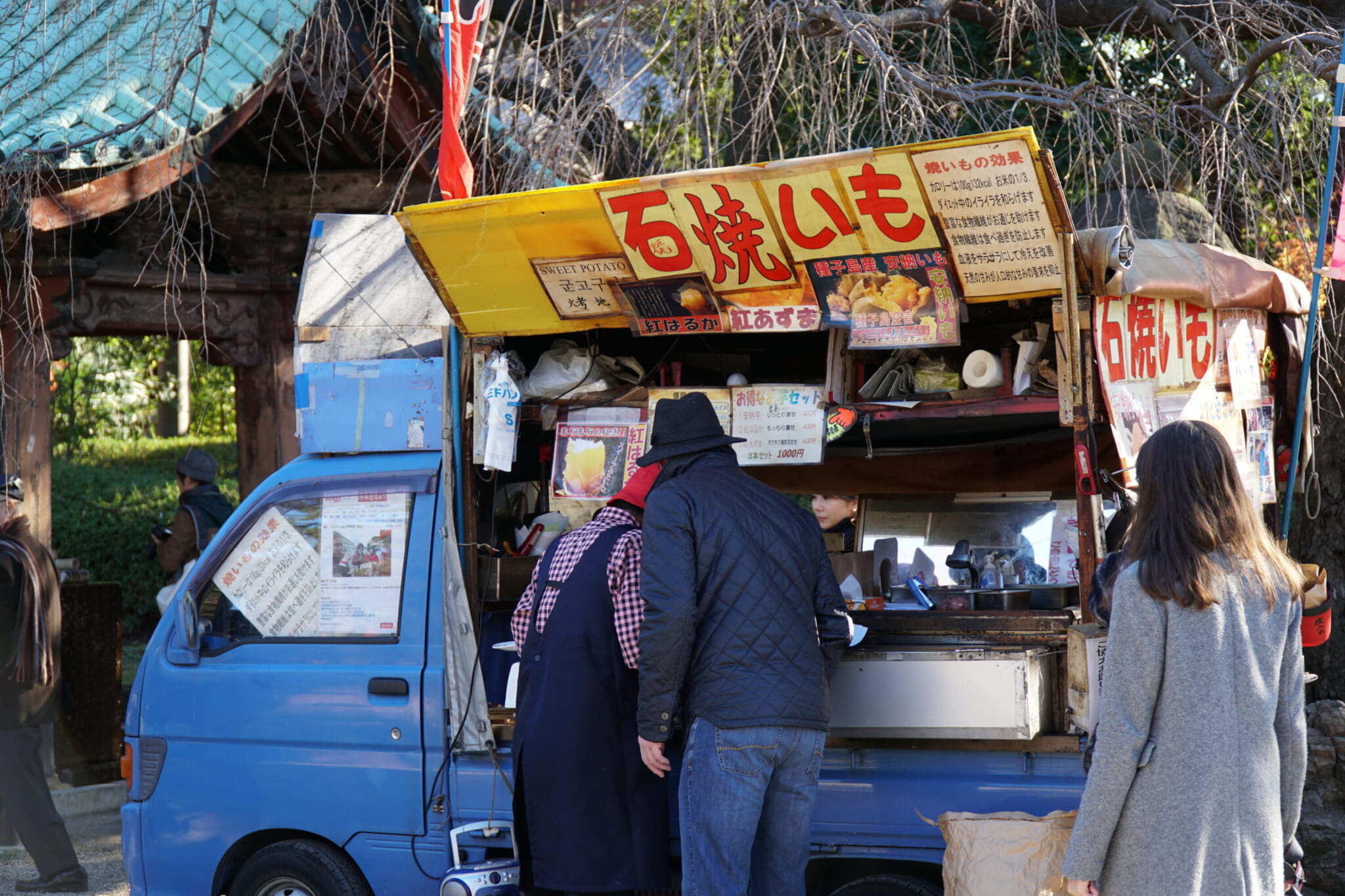
Photo by Kametaro via Shutterstock
Stone-baked Sweet Potato
It’s the best thing about winter. Make sure to grab a stone-baked sweet potato, made with Japan’s particularly sweet variety, often the beni-haruka, whenever you spot one. Come November, they are everywhere, from supermarkets and convenience stores to street stands. In Japan, where houses rarely have the luxury of a built-in oven, a roasted sweet potato seems even more delicious than it would be elsewhere. Buy it from the baked sweet-potato seller and it’s even tastier.
Your local baked sweet-potato vendor drives around in a cart each evening come dusk. The van belts out the potato song: “ishi-yaki-imoooo” through the loudspeakers, ready to greet the rosy cheeks that wait. They park outside shopping malls or stations where lines duly form. Join it, and enjoy the patter of the yaki-imo man as he sells his goodies, often with free samples to lure anyone still on the fence.
It’s 100% potatoey goodness. The yaki-imo is completely safe for vegans to eat. Try to make it yourself, although it probably won’t be the same.
Available at: supermarkets, some convenience stores, on the street.
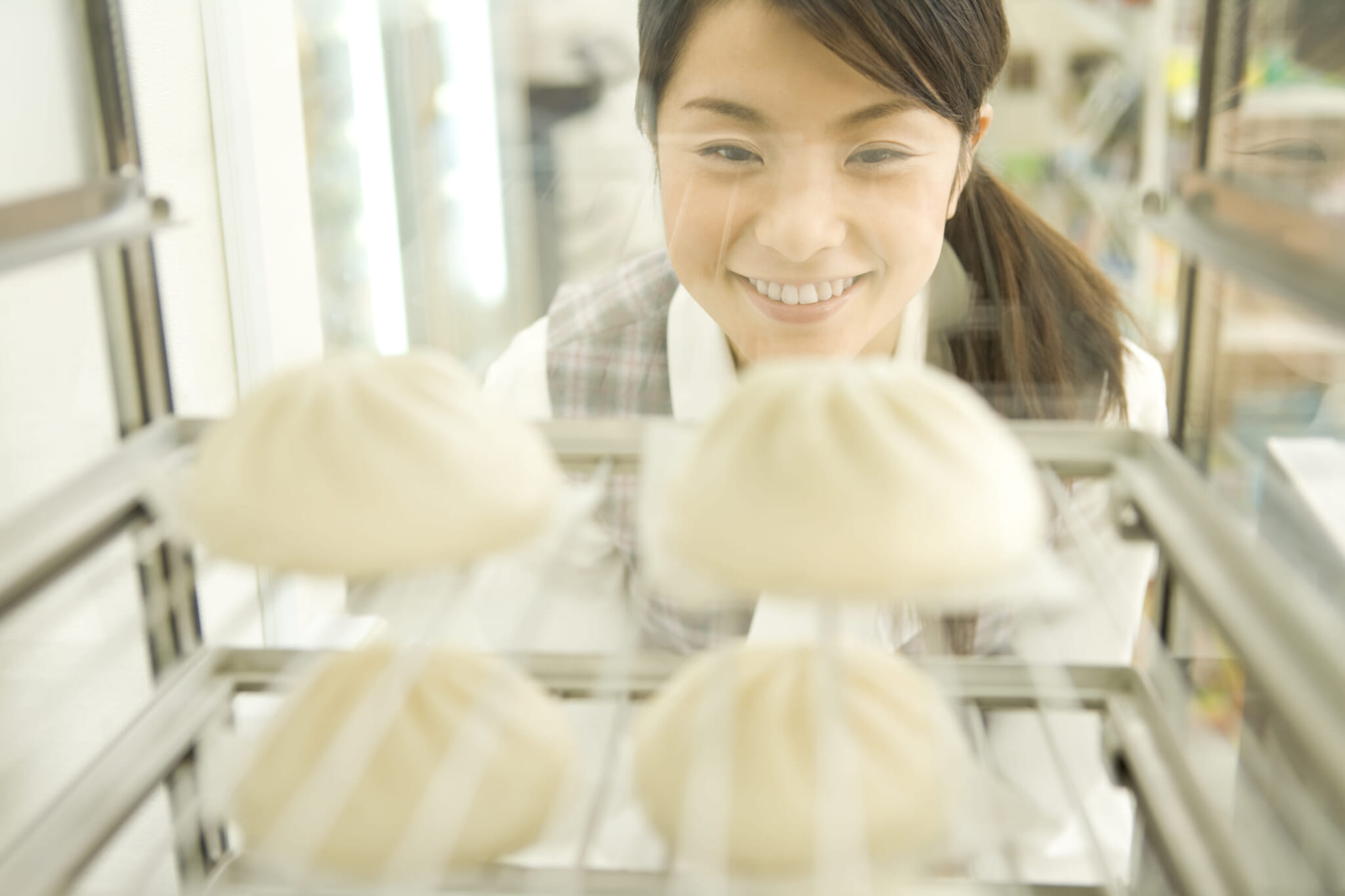
An-man
An-man. This is a word that you’ll become more familiar with the longer you’re in Japan, even though this steamed bun concept originated in China. Look out for them, ready-to-eat in convenience stores across the country, skilfully manning the space next to the register, standing proud: tiers of savory and sweet rounded blobs.
Despite their pudgy appearances, each man or “steamed bun” holds a tasty treasure. Ranging from pizza flavor to ground meat, there are more non-vegan than vegan options, but this doesn’t make the an-man any less tasty. With a filling of pure sugar and adzuki beans, the an-man is your king, your queen, your prize. Be careful of the ones sold at Lawson because, at the time of writing, they contain lard. Family Mart, 7-Eleven and the odd Seicomart if you’re in Hokkaido, all have delicious, cruelty-free an-man.
You could, of course, try your hand at making your own, or even buy them ready-to-heat in the supermarket, either in the frozen section or near the bread.
Available at: convenience stores, Chinese restaurants, supermarkets (heat-to-eat).
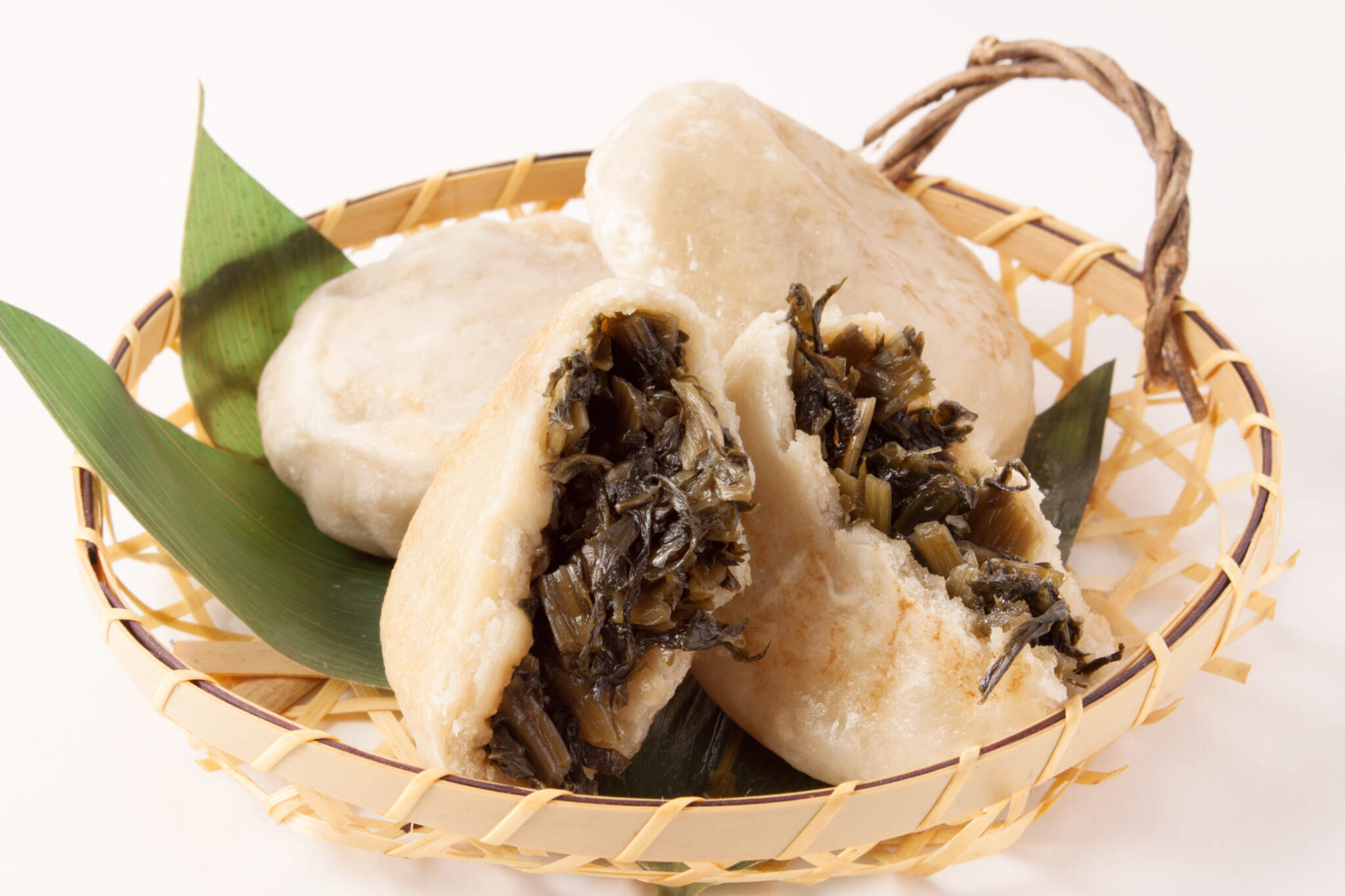
Oyaki
Common at food stands in the countryside or onsen towns, oyaki is the native Japanese version of the aforementioned man. Flatter and heavier than the fluffy steamed buns, oyaki are flattened and filled dumpling buns. Containing a sweet or savory filling, oyaki originated in the snowy prefecture of Nagano. The fillings are typically rich and flavorsome. They tend to be vegan, and can include Nozawana leaves, kabocha (Japanese squash) or adzuki beans.
If you head out skiing, make sure to look out for them.
Available at: vacation towns, ski resorts, winter festivals.
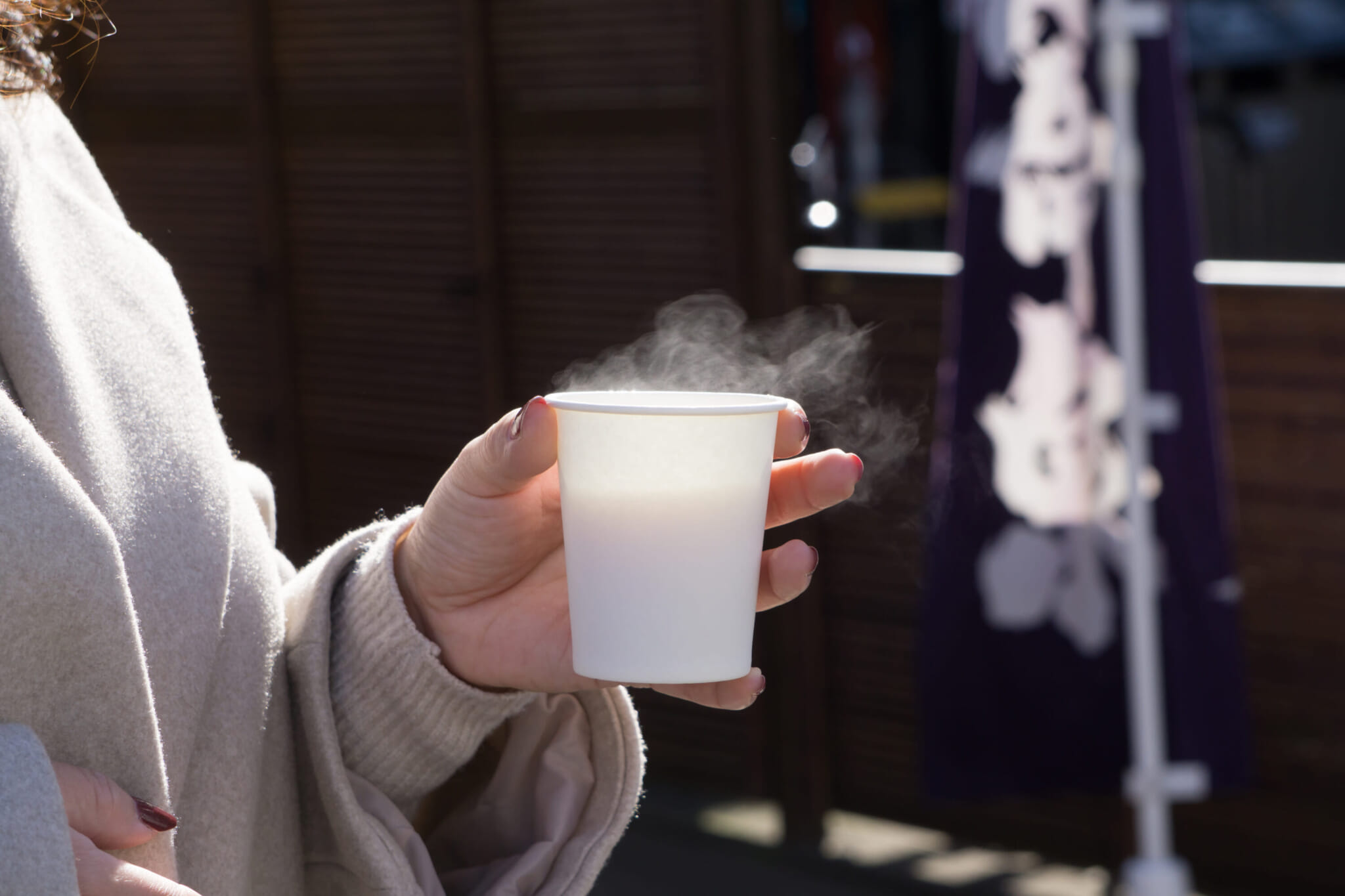
Amazake
Disclaimer: amazake is a drink. But it’s warm, sweet and contains a little rice, so it’s powerful enough to have for a snack. A traditional Japanese beverage, amazake, has been drunk for its medicinal properties since the Kofun period (300-538). It is white, made from rice fermented with koji or sake lees, with the former being completely non-alcoholic and the latter containing less than 1% alcohol.
Amazake can be consumed hot or cold, although in recent years it has become popular in vacation towns, offered by stands selling hot food such as oyaki and manju (adzuki bean paste buns). It’s also the drink of choice come New Years Day, when it is scooped up from huge vats come midnight and given to the crowds who’ve come to collect their omamori. Nowadays, it’s also available as a hot drink in some Japanese vending machines.
Available at: vacation towns, vending machines, restaurants.

Onsen Manju
These tiny, filled buns, found in souvenir shops across the country, take on a whole new life when it becomes cold. Heated in special bamboo steamers, the manju are heated with steam from hot spring water. Peddled on shopping streets in onsen towns country-wide, take a stroll around with an onsen manju in one hand and a cup of steaming amazake in the other.
Available at: onsen resorts.

